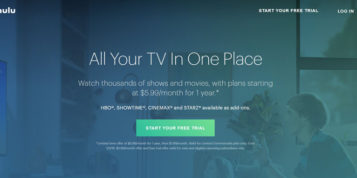The TV industry is in flux. The popularity of online video is skyrocketing as its capacity to engage viewer attention and drive brand awareness hits home. We are living in a digital multi-screen world, and sooner or later all of our TV screens will become interactive as well. In the future, all TV advertising will be served using the ad server logic we already use online, paving the way for a massive change in the way TV advertising is bought and sold and creating a huge opportunity in the market for new entrants who will work alongside the big traditional TV houses.
The advent of Connected TV and the continued popularity of on demand services are rapidly changing the online video space and advertisers must adapt quickly if they are to thrive in this evolving media landscape. When Connected TV launched, smartclip was the first company to serve ads on the Sony Playstation back in 2009. Since then we have been constantly developing our multi-screen approach and are now helping to monetise over 70 apps, which constitutes a majority of the apps available on Connected TVs.
In the long term, Connected TV will be the main driver of time spend and consumption. We are already seeing users consume digital content that is on average ten times longer on Connected TVs than on a PC and the technology is evolving quickly. For example, this year Samsung is introducing motion control, voice control and face recognition into its Connected TVs.
The great thing about interactive content is that you can rest assured that people aren’t just turning the TV on and then leaving the room while the ad is running on the screen unwatched. You can be confident that the audience is engaged and actively consuming content- a key driver in generating more brand awareness and involvement compared with the traditional TV format. A Connected TV also has the added benefit of knowing exactly which channel you are watching and when the ad break occurs. This forms the basis for a scenario where five million people watch the same football match as it’s broadcast, but in the ad break they receive individually targeted ad delivery via IP technology.
Continuing on this theme, if you compare TV programmes today with those shown 10 years ago, you’ll notice the huge shift towards real-time content to provide an incentive to watch live programmes. For example, when the final of a TV talent show is over, there is no reason to watch the final afterwards, when friends have announced the winner on Facebook and the media have reported the outcome. These patterns in viewer behaviour demonstrate how the on-demand trend has changed the way advertisers view and interact with online video content.
Looking to the future, the strongest growth areas for Connected TV will lie outside traditional TV broadcasting. A helpful comparison to look at is the evolution of the smartphone phenomenon. Five years ago app stores didn’t even exist, but now there are over 500 million apps available. At one point people couldn’t envisage a mobile phone doing anything other than making phone calls. This is the stage we are at with TV-people can’t see themselves doing anything else with their TV set other than watching programmes.
However, this is starting to change. There is currently a huge spike in the popularity of gaming apps, fuelling a debate about whether people will need a games console in future, or whether TV will play this role. Additionally, with the popularity of video conferencing via services like Skype and the uptake of services like Facebook, it becomes clear that TV advertising is developing in a very different direction to the traditional model. Most of this other content is accessed and promoted through content portals from Samsung, LG and Philips, producing huge traffic and additional advertising potential.
The creation of these new Connected TV services means that advertising needs to adapt and become interactive in order to be effective. Competition will become fierce as brands compete with more video on the internet. Brands need to become more creative in order to maintain engagement, which offers the chance for advertisers to produce more sophisticated content than the standard TV 30 second spots. Techniques such as gamification and incentives will generate ROI, with ideas such as pop up shops and competitions gaining popularity. The added value of interactive video ads will be adopted by consumers, as the use of HTML5 creates an easy-to-use interface for video content which is easier to engage with than on linear TV.
Once seen as a new technology, online video is quickly gaining favour with consumers and advertisers alike. With online media consumption habits gaining momentum and video content shifting expeditiously from computers to television sets, the future of online video advertising looks bright.






